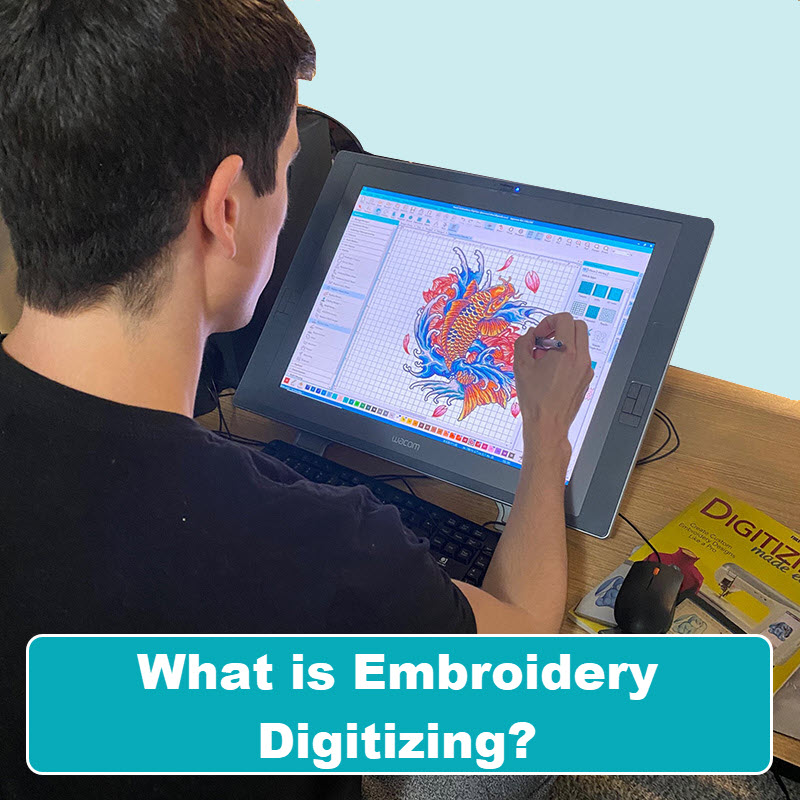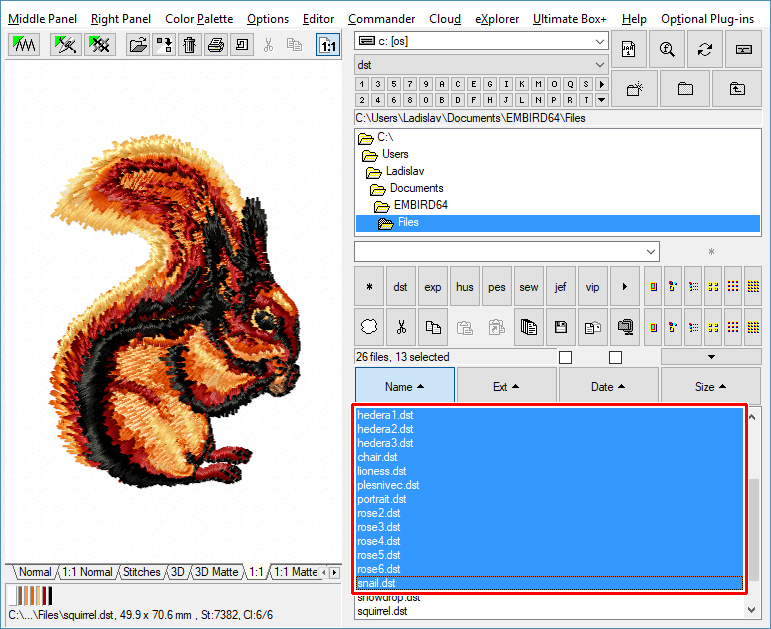
The maximum stitch length for satin stitches is 12.1mm. The longer thread length of satin stitching gives it a shiny look that works perfectly for lettering. If you’re looking to have text embroidered, then the satin stitch is probably the stitch type for you. It’s important to note that straight stitches are not just for straight lines, they can be used for curved shapes too! Straight Stitches are most commonly used for… You can create thick lines by repeating a straight stitch many times. The straight stitch is a foundational stitch for embroidery in which straight lines of stitches are repeated to make a pattern. Here are the 3 most common machine embroidery stitch types. You should also consider fabric type and the "push and pull" of the garment when selecting your stitch types. Each stitch type has a maximum stitch length that must be taken into consideration. There are a variety of different stitch types that are used to accomplish different looks, textures, and more. This will be the exact size that your image will appear on your product, so make sure to carefully measure the available space for embroidery on the product first! Once you have it just right make sure to lock the picture before moving on to the next step. Input your desired dimensions for your embroidered logo or design. In this first step you’ll simply insert your logo or design file (JPG, PNG, etc.) into the program and crop out any unnecessary blank space around the image you’d like to be embroidered.
HOW TO DIGITIZE EMBROIDERY DESIGNS FREE DOWNLOAD SOFTWARE
Step 1: Upload Your Logo to the Digitizing Software Once you’ve chosen your embroidery software follow the steps below. Other popular digitizing softwares include Brother Embroidery Design Software, Husqvarna Premier+ Embroidery Software, Janome Digitizer Software, and Embird Machine-Independent Embroidery Software. Our Senior Digitizer recommends Wilcom Advanced Digitizing Software for commercial digitizing. To do this you’ll need to have digitizing software installed on your computer. Once you know what kind of embroidery machine, you’re working with you can move forward with converting the artwork or logo into the proper file type. tap: embroidery file format for Happy commercial embroidery machines dsb: embroidery file format for Barudan commercial embroidery machines kwk: embroidery file format for Brother commercial embroidery machines jef: embroidery file format for Janome commercial embroidery machines exp: embroidery file format for Melco commercial embroidery machines dst: embroidery file format for Tajima commercial embroidery machines Here’s a look at some other commercial embroidery file types. dst files for our Tajima commercial embroidery sewing machines.

The embroidery file type is determined by the type of embroidery machine you will be using.

From a digitizer's perspective, that usually means taking a JPG or PNG file of a customer’s company logo or artwork and converting into an embroidery file. Once you've decided between digitizing your logo for embroidery or having the expert team at Merchology put the work in for you next comes the fun part - choosing your items! From Quick Ship Clothing for when you need things fast, custom Bags and Backpacks to welcome the new employee, or specially curated MerchBoxes with the coolest corporate gifts all in one single box!Ĭheck out the Trending Collections, Buyers Guides, and Event Guides to plan the coolest company parties with the hottest branded merchandise your coworkers will be talking about for years!Įmbroidery machines are not able to read the same types of files as your computer can, so you have to digitize your logo in a way that the machines can understand before they can do their job. Brendon has been digitizing logos for over 20 years and is one of the best in his field! Luckily, we have Merchology Senior Digitizer Brendon O’Flanagan to break it down for us. However, the logo digitization process is actually much more complex than that.

You may think that the machine embroidery process is as simple as uploading your logo to a computer and letting the embroidery machines go to work.


 0 kommentar(er)
0 kommentar(er)
